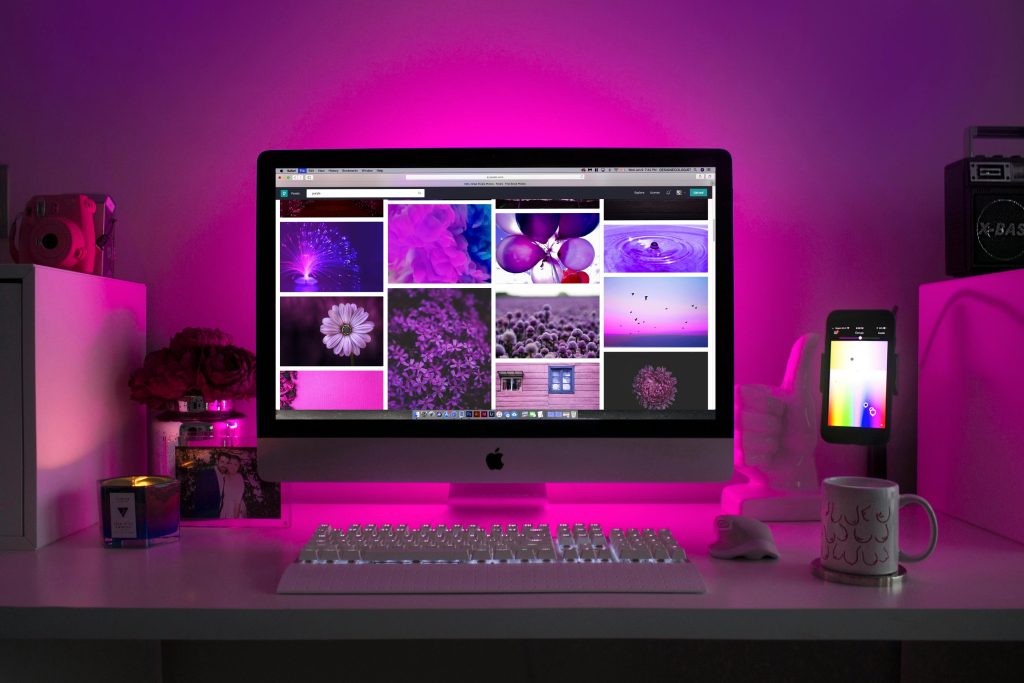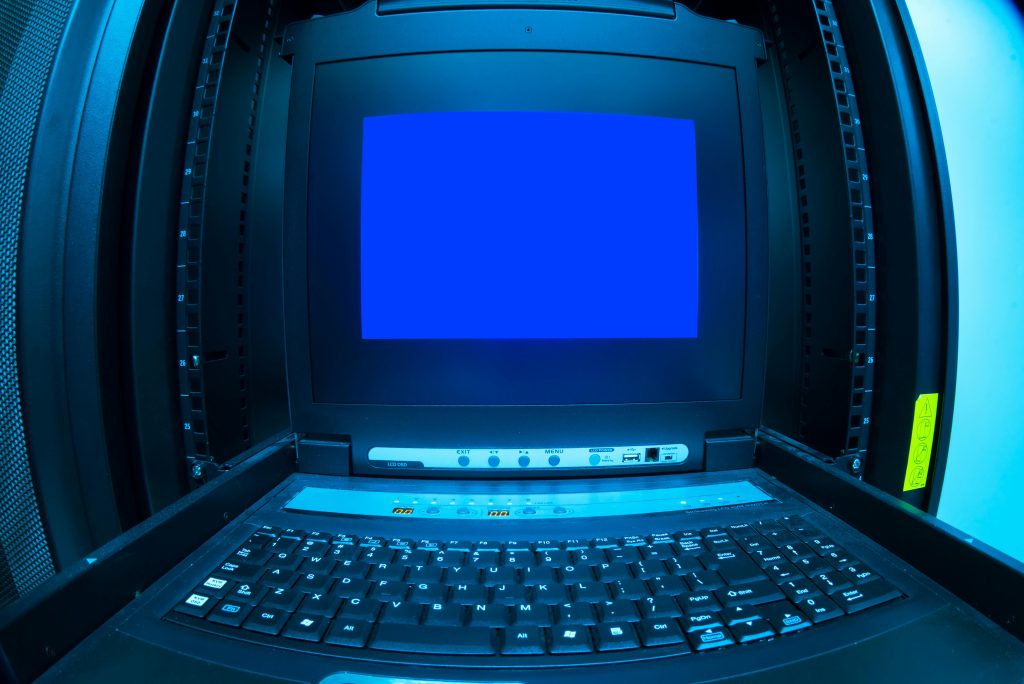Title: Troubleshooting a Static Screen Issue Caused by Physical Impact
In the world of technology, computers have become an essential part of our daily lives, enhancing our productivity, entertainment, and communication. However, technology is prone to varying challenges and unexpected issues, such as the one described in a recently posted Reddit message. This post highlights a step-sister’s PC that developed a static green screen after an accidental bump on the table it rests on. While the problem mentioned seems simple at first glance, understanding and troubleshooting such issues requires a deeper dive into possible causes and solutions.
Understanding the Problem: What is a Static Screen?
A static screen refers to an electronic display that shows a non-moving pattern or image rather than the dynamic visuals expected, like in video or game playback. This can include patterns of noise, lines, or, as described, a “green static” that partially obscures what is on the screen. The occurrence can stem from hardware or software issues and determining the root cause is critical to resolving the issue efficiently.
Key Characteristics of Static Screen Issues:
1. Color Variations: As in the case mentioned, static may appear in various colors – common ones include green, red, and blue, often referred to as “RGB noise.”
2. Visibility: Sometimes the content behind the static may still be discernible, suggesting that the output signal from the GPU is not entirely disrupted.
3. Persistence: Whether it appears only during certain activities (like gaming or video playback) or remains constant can give clues as to its origin.
Identifying the Cause: Why a Bump Could Affect a PC
Before panicking about costly repairs, consider why the physical act of jarring the table might have led to a screen issue. Common components affected by physical disturbance include:
1. Loose Connections:
– Cables and Ports: Internal or external cables may become partially disconnected due to jarring motions. This could lead to signal disruptions that manifest as static.
– Checkpoints:** Ensure HDMI, VGA, or DVI cables are tightly secured. Inspect the connectors at both the monitor and the PC.
2. Faulty Graphics Card:
– Seating and Slot Integrity: The GPU (graphics processing unit) could become unseated, especially in desktop configurations. Additionally, a worn or loose PCIe slot might cause signal inconsistencies.
– Solution: Power down the PC, remove and reinsert the GPU, ensuring it’s securely placed back into the PCIe slot.
3. Grounding Issues:
– Poor grounding within the system can result in electrical interference, which might be heightened by vibrations or kinetic movements, affecting display quality.
– Solution: Assess the internal wiring and connection to ensure proper grounding. It might be advisable to consult with an electronics professional for this.
4. Monitor Damage:
– Though indirect, if the monitor itself experienced shock, there might be temporary or permanent damage to its display capabilities.
– Diagnostic Action: Test the monitor with another computer or device to isolate the issue to the screen itself.
Troubleshooting Steps for Static Screen Issues
Once potential causes are outlined, systematic troubleshooting is essential in resolving the problem:
Step 1: Reboot and Reconnect
– Begin by restarting the computer to clear any temporary glitches.
– Disconnect and firmly reconnect all video cables.
Step 2: Inspect Hardware
– Open the case of a desktop to check that all internal components, especially GPU and RAM, are securely fastened.
– For laptops, inspect the ports and hinges. In extreme cases, disassembly by professionals might be needed.
Step 3: Testing with Alternative Components
– Connect a different monitor, if available, to see if the static persists, helping to determine if the issue is with the PC or the monitor.
– Test the current monitor with another device to rule out the display as the culprit.
Step 4: Update or Reinstall Drivers
– Outdated or corrupt graphics drivers can cause unusual display behavior. Visit the manufacturer’s website for updates.
– As a last resort, uninstall and then reinstall the GPU driver through Device Manager.
Prevention: Keeping Your PC Static-Free
Prevention is always better than cure, and there are measures that can help avoid such issues in the future:
Protective Measures:
1. Positioning: Position your PC on a stable surface away from high-traffic areas where accidental jostling might occur.
2. Cable Management: Ensure cables are not taut and have some slack, reducing the likelihood that a jostle will dislodge them.
3. Shock Absorption: Use shock-absorbing pads underneath desktops and monitors to minimize impact damage from accidental bumps.
Regular Maintenance:
– Clean your PC and peripherals regularly, as dust can interfere with connections.
– Periodically check all connections and seating to ensure stability, especially after desk or equipment moves.
Software Updates:
– Keep all software, especially system drivers and operating systems, regularly updated to prevent potential software-induced conflicts.
Final Thoughts
Technical issues can often seem daunting, especially when there is a sudden change in functionality, such as a static screen. However, identifying the root causes through systematic troubleshooting, as outlined in this discussion, can save both time and money. In cases where DIY solutions are insufficient, consulting with professional repair services is advisable to prevent further damage.
For the Reddit user experiencing this issue, rest assured that with the right steps, a static screen can usually be resolved effectively. More importantly, this situation serves as a reminder of the importance of careful handling and regular maintenance of our technological devices. As technology continues to evolve, staying informed and proactive about tech care will remain essential in ensuring both longevity and performance.
Share this content:




Response:
It sounds like you’re encountering an issue that can indeed be frustrating. A static screen can be caused by various factors, particularly after a physical impact. Here are some practical steps you can take that align with the troubleshooting advice provided above:
1. Check Connections Thoroughly:
Start by ensuring that all cables, including power and data cables, are securely connected to your monitor and PC. Sometimes a slight disconnection can lead to issues that appear significant.
2. Test Your Hardware:
If possible, test your GPU in another machine or use a different GPU in your system. This will help isolate whether the GPU itself is at fault or if the issue resides elsewhere. For laptops, be sure to inspect both the connectors and the hinges carefully for any signs of damage.
3. Monitor Diagnostics:
Try connecting your monitor to another computer. If it displays correctly on another system, the problem may be with your PC rather than the monitor itself.
4. Driver Update:
Make sure your graphics driver is up-to-date. Monitor the manufacturer’s site for updates or pertinent fixes that may address display issues specifically.
5. Seek Professional Help:
If none of the above troubleshooting steps yield a solution, consulting with a professional technician
Hi there,
It sounds like your monitor is showing a static screen after a physical impact, which can often be caused by hardware disconnection or damage. Here are some troubleshooting steps you can try:
If after these steps the static screen remains, consider consulting a professional technician to further diagnose potential hardware damage. Regular maintenance and careful handling can help prevent similar issues in the